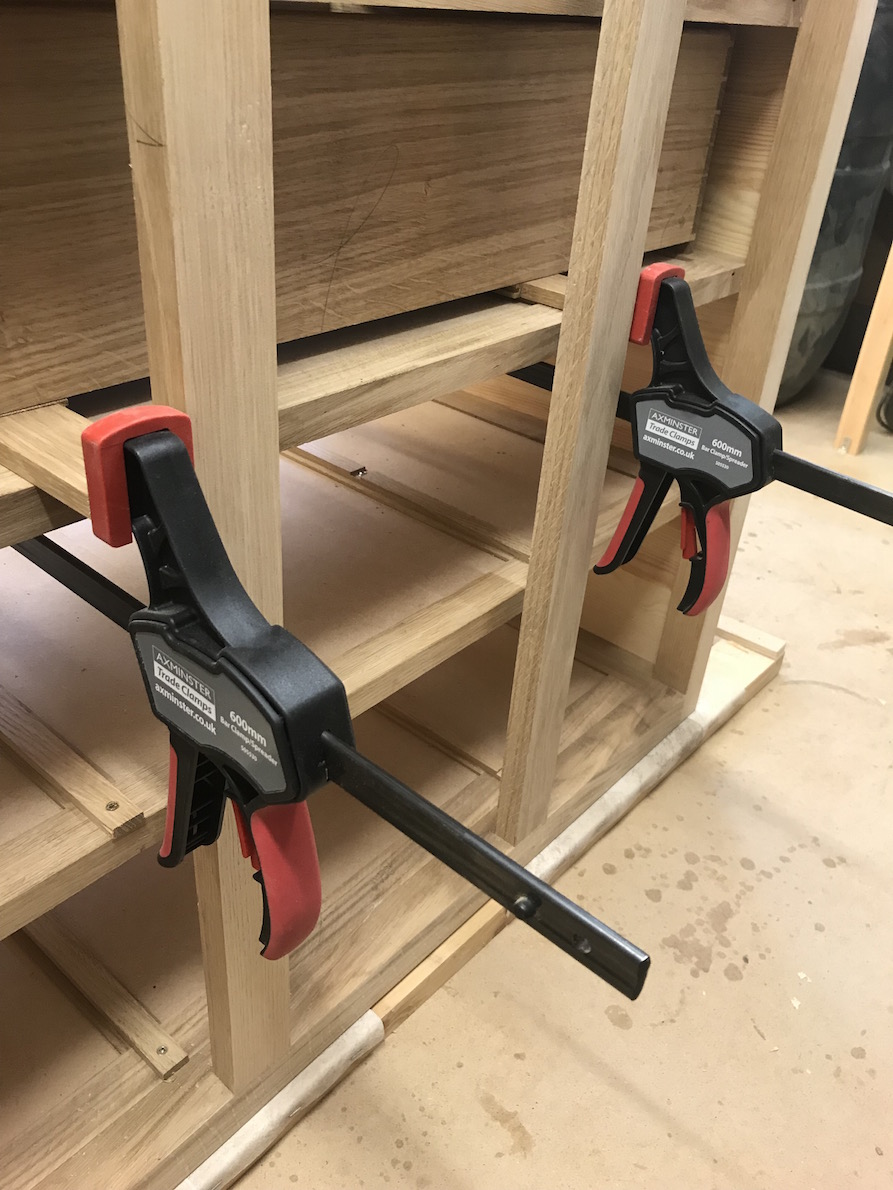woodbloke66
Established Member
Thanks Gary. For a full account of how to make these drawers, see Rob Ingham's 'Cutting Edge Cabinetmaking', now sadly out of print but well worth it if you can lay hands on a copy.Quickben":2x6nh9yr said:Lovely chest of drawers, Bob. That nice blue bandsaw had some use with all the veneer cutting !
Can you elaborate on the drawer runners and muntins ? Dovetail sliders, or a plain dado slot ?
I'm planning on making some drawers for various furniture pieces soon, and I'd rather avoid using bought in ikea style runners. Not due to woodworking snobbery, just because I don't like the look of them on the side of the carcass.
Gary.
In essence, you make a standard drawer box from say 7 or 8mm qs oak. In the centre of the box, there's a muntin with a groove on the underside, which corresponds with the runner fixed into the carcase of the job. The drawer box needs to glide smoothly on the runners and kickers but doesn't have to touch the sides...if you look at this project, you'll see it's impossible for them to anyway.
In the front of the drawer box, you drill several cs holes to enable the front to eventually be fixed in place; in addition there's two holes each side to take location pins, which I made from the shanks of a couple of 100mm nails.
To make the front, use material of your choice about 12mm thick and fit it very snugly to the opening, with the drawer box in place. On the front of the drawer box are a couple of strips of d/s tape, onto which the front is temporarily stuck. The whole thing is then withdrawn (helps here if the cabinet back isn't in place so it can be pushed out) and the drawer is placed vertically on the bench, front down and then carefully G clamped to the top. The holes are then drilled for the locating pins and they're tapped securely in place, after which they can be removed, the drawer font separated and the d/s 'goo' cleaned off. You now have a way in which the front can be located precisely to the drawer box, just using the two pins and it can be removed and replaced as many times as you like; it will always go back in the same place.
Fit the drawer front to the required clearance all round (I aim for 0.15mm) and when all looks good, polish it. Then for the final time, offer it up to the drawer box, with the pins still in place, then permanently screw the box and front together with 16mm screws: remove the location pins.
It's a long and convoluted way of making a drawer, but it's easy to fit it once done; standard drawers wouldn't have worked with this project - Rob









































